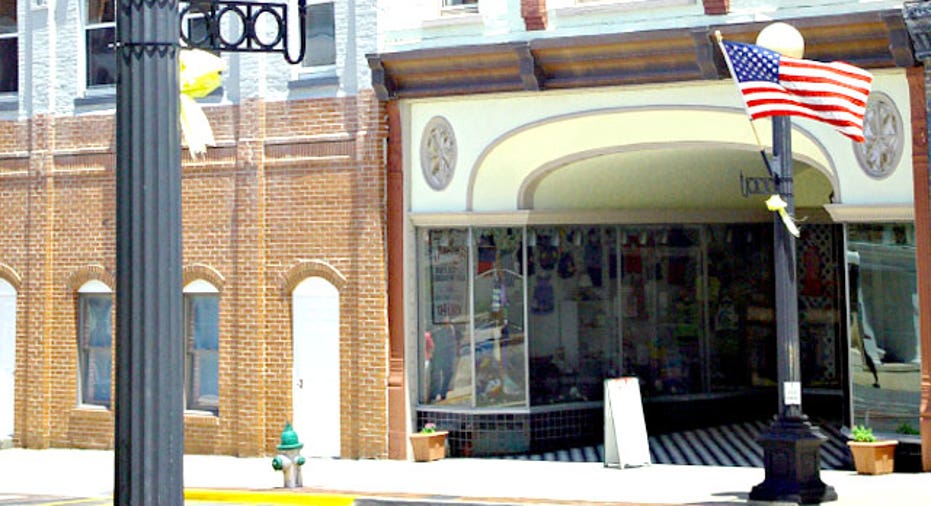Opinion: The Devil of Main Street Is in the Volcker Rule

The following is an op-ed written by Tom Quaadman, vice president of the Center for Capital Markets Competitiveness at the U.S. Chamber of Commerce.
This week, five federal regulators met Treasury Secretary Jacob Lew’s directive to finish the Volcker Rule (named after former Federal Reserve Chairman Paul Volcker) by the end of the year. Lew set the arbitrary deadline in July and continued to push the five agencies charged with crafting the Volcker Rule to reach the finish line – no matter what the cost.
The Volcker Rule is the most complex piece of the vast 400-rule Dodd Frank financial regulatory reform bill that added three new federal financial regulators to the alphabet soup of nearly two dozen existing regulators. The goal of this particular rule was to limit the ability of banks to make profits by investing their own money – so called “proprietary trading." The theory was that by limiting these investments, banks would be safer and have less risk. The trick was to find a simple way to distinguish between the investments Congress sought to ban and the much needed investments banks must make every day to help fuel the Main Street economy.
Unfortunately, though, the Rule is anything but simple. Congress and regulators may have taken a shot at Wall Street, but they will hit Main Street instead.
Congress and regulators were clear that they understood the need to safeguard what is known as “market making” – namely the ability of banks to ensure there is a functioning market of buyers and sellers for corporate debt. This is essential to ensure companies can purchase raw materials, build new facilities and make other investments to grow their business. And, one of the results of this kind of trading is that the firms then have more capital on hand to lend to their customers.
Ultimately, the Volcker Rule could restrict the ability of financial institutions to underwrite stocks, bonds and make business loans. Regulators claim that banks will still be able to fulfill the needs of their customers. Unfortunately, the devil is in the details.
The Rule creates a new regulatory regime based on new legal terms of art, where five regulators subjectively decide if trades comply with federal law. In this new “prove-the-negative-environment,” financial institutions will need to determine if they stay in the market making business at the cost of legal uncertainty. This is made even harder because the same five regulators who drafted the rule will each now develop their own regulatory interpretations and approaches to implement the Volcker rule.
So how does this affect Main Street businesses? Well, the issuance of stocks, bonds and loans, now hampered by Volcker, is exactly how businesses get cash to grow and operate. Slower, more expensive business loans = no business growth.
Even the European Union, which favors more regulation, has found this is a leap too far.
In 2010, the Chamber proposed an alternative to this regulatory behemoth which included higher capital requirements for financial firms. Such a requirement would achieve the same purpose that regulators claim to fix with the Volcker Rule. And, over the past couple of years the Chamber submitted more than a dozen letters and studies to federal regulators outlining the potential negative impacts of the Volcker Rule on corporate treasurers at Main Street businesses.
Anthony J. Carfang, a founding partner of the corporate treasurer consulting firm Treasury Strategies, testified before Congress on the negative impact the Volcker Rule could have on U.S. businesses. In his testimony, he pointed out that:
• U.S. Businesses are among the most capital efficient in the world, but the Volcker Rule will change that.
• Risk can neither be created nor destroyed. It can only be transformed. The Volcker Rule transforms financial risk from banks to corporate treasurers, which ultimately hurts U.S. businesses and the broader economy.
• The Volcker Rule is one of four major financial regulations, each untested in the real world, which will hit capital markets simultaneously. The cumulative regulatory burden is a big risk.
• Once the Volcker Rule goes into effect, there is no way to undo the harm it could do.
The business community asked regulators to re-propose the Volcker Rule to identify and fix unintended consequences before it goes into effect. A re-proposal would have ensured a fair rulemaking process. Instead, regulators decided it was more important to get the Volcker Rule done before the end of the year than get it right.
So, how will businesses react? By putting more cash away to use for a rainy day. A study by Professor Anjan Thakor of Washington University in St. Louis found that businesses may have to build up cash reserves by as much as $800 billion to counteract the inefficiencies that the Volcker Rule will place on American capital markets. This will take $800 billion out of the productive economy and sideline it, instead of investing it in research and development or creating new jobs.
It certainly doesn’t sound like the Volcker Rule will help the U.S. companies remain competitive or sustain economic growth and job creation.



















